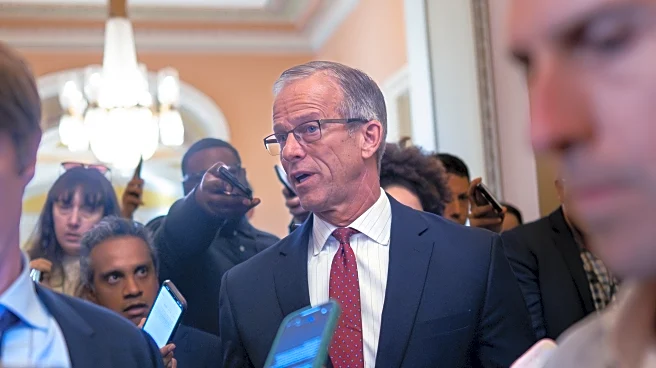What's Happening?
The ongoing federal government shutdown, now in its third week, is beginning to significantly impact the U.S. supply chain and economic growth. Industry observers note that the shutdown exacerbates existing
supply chain issues, such as excess capacity and low demand in the freight market, a depressed rate environment, and ongoing tariff challenges. Despite the shutdown, tariffs remain unaffected, as the White House continues to negotiate trade deals with international partners. Customs operations are reportedly functioning normally, ensuring that goods continue to flow through ports. However, the economic impact is becoming more pronounced, with estimates suggesting a reduction in GDP by 0.03% for a two-week shutdown, potentially escalating to a loss of $7.6 billion to $15.2 billion per week if the shutdown persists.
Why It's Important?
The shutdown's impact on the U.S. economy is significant, as it threatens to further stress an already fragile economic environment. The manufacturing sector, in particular, faces increased pressure due to the combination of trade uncertainties and reduced government operations. The prolonged shutdown could lead to disruptions in government functions, affecting public participation in trade negotiations and other economic activities. The potential economic losses underscore the urgency for a resolution, as continued delays could exacerbate the current challenges faced by the freight and manufacturing industries, ultimately affecting the broader U.S. economy.
What's Next?
If the shutdown extends beyond 30 days, it could lead to more severe disruptions in government operations and economic activities. Stakeholders in the supply chain and manufacturing sectors are likely to push for a swift resolution to mitigate further economic damage. The ongoing negotiations on trade deals, such as the USMCA, may also face delays, impacting international trade relations. Businesses and industry leaders will need to navigate these uncertainties while advocating for policy solutions that address both the immediate and long-term economic challenges posed by the shutdown.












